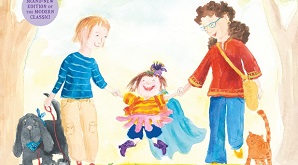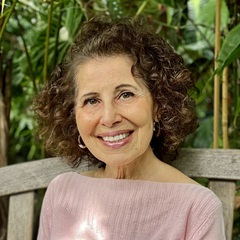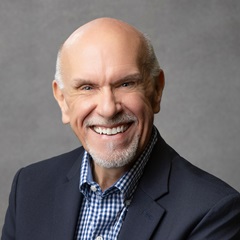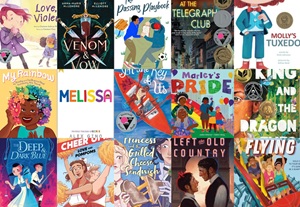
 We’re pleased to welcome authors Rob Sanders and Lesléa Newman to the blog today. The two leaders of our workshop Writing the Rainbow: Crafting Picture Books With LGBTQIA+ Themes chat about writing picture books, recognizing important anniversaries and why more LGBTQIA+ voices are needed in children’s publishing.
We’re pleased to welcome authors Rob Sanders and Lesléa Newman to the blog today. The two leaders of our workshop Writing the Rainbow: Crafting Picture Books With LGBTQIA+ Themes chat about writing picture books, recognizing important anniversaries and why more LGBTQIA+ voices are needed in children’s publishing.
Rob Sanders: Lesléa, it’s always good to sit and chat with you. Heather Has Two Mommies is recognized as one of the first picture books with LGBTQIA+ representation. I know the story behind the making of this book, would you share it with us?
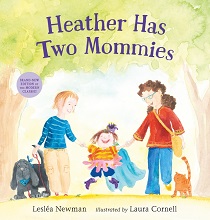 Lesléa Newman: Here’s how it happened: a local lesbian mom literally stopped me on the street and said, “I don’t have a book to read to my daughter that shows a family like ours. Someone should write one.” And because I was also a child who did not see her (Jewish) family represented in children’s books, I took her request very seriously. I checked armloads of picture books out of the library to study the form and came up with the story of Heather with her two arms, two legs, two eyes, two ears, two pets, and two mommies.
Lesléa Newman: Here’s how it happened: a local lesbian mom literally stopped me on the street and said, “I don’t have a book to read to my daughter that shows a family like ours. Someone should write one.” And because I was also a child who did not see her (Jewish) family represented in children’s books, I took her request very seriously. I checked armloads of picture books out of the library to study the form and came up with the story of Heather with her two arms, two legs, two eyes, two ears, two pets, and two mommies.
And then because no one would publish it, a friend of mine who was, at the time, a lesbian mother of a one-year-old as well as the owner of a desktop publishing business (remember those?) and I decided we would publish it ourselves. We started a fundraising effort (stuffing envelopes! licking stamps!) and raised enough money to print 4,000 copies. Then about six months later, Sasha Alyson acquired the book from us and published it as part of his Alyson Wonderland line. And then after about 20 years, the book went out of print very briefly and was brought back to life by Candlewick Press in 2015. And the paperback has just gone into its fifth printing! Heather marches on in her purple cowgirl boots! Things have really changed since I wrote the book in 1988.
Who would have thought there would ever be picture books about the Pride Flag and Stonewall riots? Rob, how did you come up with the brilliant idea for Pride: The Story of Harvey Milk and the Rainbow Flag and Stonewall: A Building, an Uprising, a Revolution?
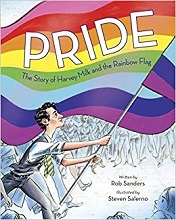 Rob Sanders: You’re right, picture books about the Pride Flag and the Stonewall Uprising probably wouldn’t have been published even five years ago. So, it’s extraordinary to see them and an ever-growing number of LGBTQIA+ themed picture books being published, in libraries, and on bookstore shelves.
Rob Sanders: You’re right, picture books about the Pride Flag and the Stonewall Uprising probably wouldn’t have been published even five years ago. So, it’s extraordinary to see them and an ever-growing number of LGBTQIA+ themed picture books being published, in libraries, and on bookstore shelves.
I know the exact moment I was inspired to write Pride. It was the evening of June 26, 2015, the night of the SCOTUS marriage equality decision. As I watched the news coverage that evening, I—along with everyone else—was amazed when the North Portico of the White House was washed in the colors of the rainbow flag. Do you remember that? It was an emotional moment.
Since I’m an elementary school teacher I view most things thinking about my students. I knew they had seen Rainbow Flags, but I also knew most (if not all) had no idea who created the flag, why it was created, and its importance to the our community. I wrote the first draft of the book that night. Gilbert Baker, the designer of the flag, read the book at two different stages, and it was Gilbert who pointed out that the 2018 release date would be the 40th anniversary of the first Pride Flag.
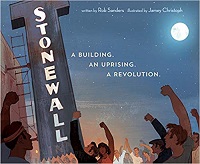 That sent me looking for other anniversaries. Somewhere in the back of my mind I knew that the 50th anniversary of Stonewall was approaching and so I set out to write the first picture book about the subject. The most difficult part of that process was finding the entry point, the way to tell the story for kids. One day in my office, struggling with the manuscript, I said to myself, “If only these walls could talk.” That was the ah-ha moment for me. Stonewall: A Building. An Uprising. A Revolution. was released this year in time for the 50th anniversary of the uprising.
That sent me looking for other anniversaries. Somewhere in the back of my mind I knew that the 50th anniversary of Stonewall was approaching and so I set out to write the first picture book about the subject. The most difficult part of that process was finding the entry point, the way to tell the story for kids. One day in my office, struggling with the manuscript, I said to myself, “If only these walls could talk.” That was the ah-ha moment for me. Stonewall: A Building. An Uprising. A Revolution. was released this year in time for the 50th anniversary of the uprising.
Lesléa, you’re a well-published author who writes in various forms and genres. Why do you continue to return to picture books?
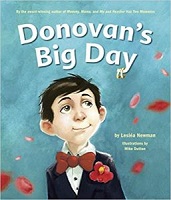 Lesléa Newman: I simply adore picture books. I find writing them extremely challenging, and as a writer I do like to constantly challenge myself. So I’ve written many picture books in various forms: picture books in prose, picture books in verse, historical picture books, holiday picture books, picture book biographies…The only type of picture book I can’t imagine taking on is a wordless picture book! I am primarily a poet—my mentor was Allen Ginsberg with whom I worked at the Jack Kerouac School of Disembodied Poetics—and I find that the text of picture books, whether or not they are written in verse—have a lot in common with poetry. They have to be succinct, every word has to count, they use a lot of poetic techniques such as rhythm, sound, repetition, alliteration, personification, meter. etc.
Lesléa Newman: I simply adore picture books. I find writing them extremely challenging, and as a writer I do like to constantly challenge myself. So I’ve written many picture books in various forms: picture books in prose, picture books in verse, historical picture books, holiday picture books, picture book biographies…The only type of picture book I can’t imagine taking on is a wordless picture book! I am primarily a poet—my mentor was Allen Ginsberg with whom I worked at the Jack Kerouac School of Disembodied Poetics—and I find that the text of picture books, whether or not they are written in verse—have a lot in common with poetry. They have to be succinct, every word has to count, they use a lot of poetic techniques such as rhythm, sound, repetition, alliteration, personification, meter. etc.
What do you love about writing picture books and have you ever considered writing in other forms? And I know you teach elementary school children. Does working with kids give you ideas and/or influence your writing? Do you ever try out your works in progress on them?
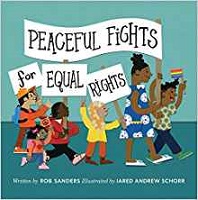 Rob Sanders: I love picture books, too! I’ve tried my hand at other genres. I worked my way through college and graduate school writing curriculum material. And worked as an editor, editorial group manager, and product designer for many years in religious education publishing. But picture books are my first love. In fact, I’ve spent my entire adult life working in careers centered around children so, yes, I think about them when I’m writing. I believe (or I hope) I have a sense of what kids like, what appeals to them, and what will and won’t work. Of course, kids will surprise you and you can never make assumptions about them. I often say about teaching, “Every plan is perfect, until it comes in contact with a child.”
Rob Sanders: I love picture books, too! I’ve tried my hand at other genres. I worked my way through college and graduate school writing curriculum material. And worked as an editor, editorial group manager, and product designer for many years in religious education publishing. But picture books are my first love. In fact, I’ve spent my entire adult life working in careers centered around children so, yes, I think about them when I’m writing. I believe (or I hope) I have a sense of what kids like, what appeals to them, and what will and won’t work. Of course, kids will surprise you and you can never make assumptions about them. I often say about teaching, “Every plan is perfect, until it comes in contact with a child.”
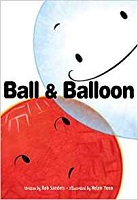 I write down (or dictate into my phone) things kids say, questions they ask, and things I discover while teaching that there aren’t books about. There’s simply not enough time to follow every inspiration—but that’s a nice problem to have. One example of an inspiration I was able to follow through on happened a couple of years ago when I watched two kindergarteners leaving the school library. One student accidentally dropped her books and exclaimed, “I hate gravity.” I pulled out my phone, recorded those words, and added to the idea throughout the day when I had free time. That idea became Ball & Balloon which released in August 2019.
I write down (or dictate into my phone) things kids say, questions they ask, and things I discover while teaching that there aren’t books about. There’s simply not enough time to follow every inspiration—but that’s a nice problem to have. One example of an inspiration I was able to follow through on happened a couple of years ago when I watched two kindergarteners leaving the school library. One student accidentally dropped her books and exclaimed, “I hate gravity.” I pulled out my phone, recorded those words, and added to the idea throughout the day when I had free time. That idea became Ball & Balloon which released in August 2019.
I generally don’t show works-in-progress to my students. They’re like someone’s mother—either they love everything, or they are brutally critical. I do show my students the various stages of the publishing process after a book’s been acquired—editorial notes, various stages of revision, sketches, F&Gs (I know, it sounds dirty but it means “folded and gathered” pages), and we always celebrate the release of a new book with a book birthday party.
Another question for you, Lesléa–Why are more LGBTQIA+ voices needed in children’s publishing?
Lesléa Newman: We need as many voices as possible because there are endless ways to be a family, and all children deserve to see themselves in a book. When Heather first came out, I heard stories of kids going to bed with the book under their pillow, kids hugging the book like it was a friend, kids crossing out the word “Heather” every time it appears in the book and writing their own names instead.
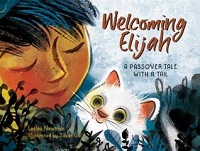 We definitely need more LGBTQ+ voices, especially transgender voices and voices of people of color. I desperately want to hear those stories. One thing that I am doing in my own work is being very conscious of family constellations and of pronouns. For example, in my forthcoming book, Welcoming Elijah: A Passover Tale with a Tail (coming out from Charlesbridge in 2020) the opening scene depicts guests arriving to a home for a Seder (Passover meal). Originally the artwork showed a boy standing next to his mom and his dad on their front porch, which is kind of a default family model. Nowhere in the text did it say that the boy had a mom and a dad. So I asked my editor if we could just picture the boy opening the door to welcome the guests. That way the book is more accessible to kids from all types of families.
We definitely need more LGBTQ+ voices, especially transgender voices and voices of people of color. I desperately want to hear those stories. One thing that I am doing in my own work is being very conscious of family constellations and of pronouns. For example, in my forthcoming book, Welcoming Elijah: A Passover Tale with a Tail (coming out from Charlesbridge in 2020) the opening scene depicts guests arriving to a home for a Seder (Passover meal). Originally the artwork showed a boy standing next to his mom and his dad on their front porch, which is kind of a default family model. Nowhere in the text did it say that the boy had a mom and a dad. So I asked my editor if we could just picture the boy opening the door to welcome the guests. That way the book is more accessible to kids from all types of families.
I published a book a while back called Just Like Mama, which shows a girl having a wonderful day with her mom. She might have another mom who isn’t home. She might have a dad who isn’t home. Her mom might be her only parent. It’s never explained. And I also published a book called Daddy’s Song which is about a dad singing his daughter to sleep. The child might have another parent–another dad or a mom, or not.
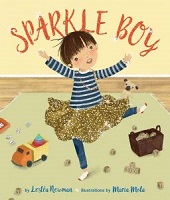 I’m also conscious of gender roles. For example, in Sparkle Boy, which focuses on Casey, a little boy who likes to wear sparkly skirts, bracelets, and nail polish, it’s the dad who does the grocery shopping (Dad is also the one who agrees to paint Casey’s nails). I have also written some picture books lately that do not include any pronouns at all, except for the first person pronoun “I,” And I am hoping that the illustrations will depict the characters as gender-free.
I’m also conscious of gender roles. For example, in Sparkle Boy, which focuses on Casey, a little boy who likes to wear sparkly skirts, bracelets, and nail polish, it’s the dad who does the grocery shopping (Dad is also the one who agrees to paint Casey’s nails). I have also written some picture books lately that do not include any pronouns at all, except for the first person pronoun “I,” And I am hoping that the illustrations will depict the characters as gender-free.
I’m not sure I’m really answering your question, so I’ll throw it back at you: Why do you think more LGBTQIA+ voices are needed in children’s publishing?
Rob Sanders: Frankly, Lesléa, you and I aren’t getting any younger, so we need more people writing the stories of our community! (Okay, I’m not getting any younger. You will always be 39!) But seriously, there’s a bigger reason, too. Kids in the world need to hear the stories of our community and they need to hear those stories from authentic voices–people who have a reason to tell each story, people who can relate to the characters they are writing about, and so on. Anyone can research and write any story…they may even get those stories published. Authenticity was added to my forthcoming book The Fighting Infantryman: The Story of Albert D.J. Cashier, Transgender Civil War Soldier with the help of transgender representatives from GLADD who have editorial feedback and vetted the book, and by the illustrator, who is transgender.
Authenticity brings a new level and a new layer to the writing. One of my struggles while writing Stonewall was how to represent the myriad of people who were involved in the Uprising. For the first picture book on the subject, I told the overarching story of the Uprising from the perspective of the buildings. But someone with authenticity needs to write the story of Marsha P. Johnson, Sylvia Rivera, Stormie DeLarverie, and others who were there and who contributed to the early LGBTQ+ rights movement. I believe that every child needs to see herself/himself/themself in books, so the more authentic voices in the community who are telling stories, the better. We also need allies telling the stories of allies, family members telling stories from the perspective of family members, and the like.
Our work at Highlights is all about developing, encouraging, and empowering those new voices. Join us!

